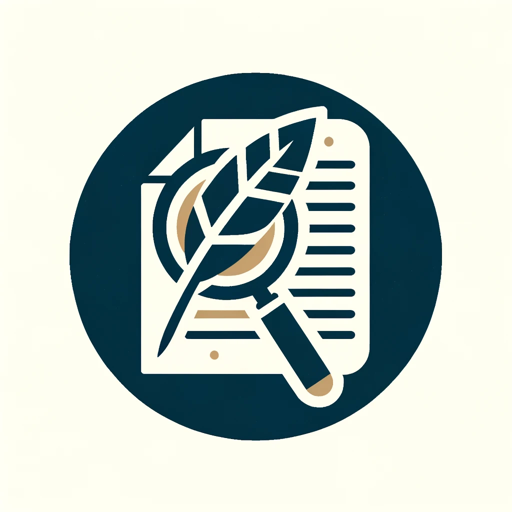ACTUALLY LEARN in 3 key steps: Teach, Think, Test-AI-powered learning assistant
AI-powered learning in three key steps
I'm ready to start - give me my initial questions so that you can design the teaching cycle around my needs
Related Tools
Load More
TeachSmart
Friendly pedagogy expert with advice on good ways to teach and learn. Based on "Practical Pedagogy: 40 New Ways to Teach and Learn".

Learn Anything
Learn anything in your own language with quiz.

Study Mentor
Guiding students in effective learning strategies and habits

Teach & Lead Pro
A specialist in educational coaching, skilled in aiding educators and leaders, with practical insights and guidance.

Teaching Strategies Expert
I am here to guide you in developing effective teaching strategies. What are your teaching goals?

Expert Teacher
I provide intuitive, analogical explanations for complex topics.
20.0 / 5 (200 votes)
Introduction to ACTUALLY LEARN in 3 Key Steps: Teach, Think, Test
ACTUALLY LEARN in 3 Key Steps: Teach, Think, Test (TTT) is an interactive educational tool designed to guide learners through a structured learning process. It is based on a three-phase approach: (1) Teach, (2) Think, and (3) Test, which provides a full-circle learning experience. The purpose of TTT is to ensure thorough understanding by first explaining content, then challenging the learner to think critically through progressively deeper questions, and finally testing their knowledge with a scoring system. The design is meant to adapt to the learner's pace and needs, making it suitable for a range of learning scenarios. In the 'Teach' phase, the learner receives clear and structured explanations of the topic, with opportunities to ask follow-up questions. In the 'Think' phase, learners engage with progressively challenging tasks, beginning with recall questions and moving toward deeper reasoning questions. Finally, the 'Test' phase presents multiple-choice questions, providing detailed feedback and a final score to measure the learner’s understanding. This approach ensures the learner not only memorizes information but also develops the ability to apply and reason through the material. For example, a high school student preparing for a math exam may begin with a lesson on quadratic equations (Teach), then solve simple and complex problems involving those equations (Think), and finally be tested on various applications of quadratic functions (Test).

Main Functions of ACTUALLY LEARN in 3 Key Steps: Teach, Think, Test
Teach
Example
A structured lesson explaining Newton's Laws of Motion.
Scenario
In the Teach phase, a physics learner is introduced to Newton's three laws with clear definitions, examples, and diagrams. They might receive additional explanations using a table to break down the forces acting on an object in motion. The learner is encouraged to ask questions to clarify any doubts about inertia or force vectors. After this, the learner confirms they understand the basics before moving on.
Think
Example
Progressive reasoning tasks on historical events like the French Revolution.
Scenario
A history learner is asked to recall facts about the causes of the French Revolution (e.g., financial crisis, Enlightenment ideas). They then move to simple reasoning tasks, such as comparing different historical interpretations. Finally, they are tasked with deeper reasoning questions like analyzing the revolution's long-term impact on European political thought. The gradual progression in the Think stage helps them build critical thinking and contextual analysis skills.
Test
Example
A series of multiple-choice questions testing knowledge of organic chemistry reactions.
Scenario
In the final Test phase, a chemistry learner answers 10 multiple-choice questions on organic reactions, such as substitution and elimination reactions. The test is divided into batches of 3 questions, with feedback provided after each batch. If the learner answers incorrectly, they receive detailed explanations for their mistakes and an overall score at the end, ensuring they know where to focus their review.
Ideal Users of ACTUALLY LEARN in 3 Key Steps: Teach, Think, Test
Students preparing for exams or standardized tests
TTT is ideal for students preparing for exams, such as high school students studying for standardized tests (e.g., SAT, A-levels, IB exams) or university students reviewing for subject-specific tests. These learners benefit from the step-by-step structure that allows them to understand, apply, and test their knowledge in a way that prepares them for high-stakes exam environments. The scaffolded learning approach ensures that concepts are not just memorized but truly understood.
Lifelong learners and professionals upskilling in specific domains
Lifelong learners and professionals aiming to upskill in areas such as business, technology, or science can use TTT to structure their self-paced learning. For instance, a software developer learning a new programming language could use the Teach stage to grasp syntax and structures, apply these in the Think stage with practical coding exercises, and then test their abilities with a final review of coding challenges. This group benefits from the focused, interactive structure that provides feedback and guidance along the way.

How to Use ACTUALLY LEARN in 3 Key Steps: Teach, Think, Test
Step 1
Visit aichatonline.org for a free trial without login, no need for ChatGPT Plus to access the tool.
Step 2
Select the topic you wish to learn about. Provide details such as the age group you belong to, the exam board (if applicable), and whether you prefer a shorter or longer learning experience.
Step 3
Engage in the TEACH stage, where structured learning begins. Review explanations, tables, and bullet points tailored to your level. Ask any questions to clarify your understanding before moving on.
Step 4
Proceed to the THINK stage, where you tackle progressively challenging tasks. You'll start with recall tasks, followed by simple reasoning, and then deeper reasoning, testing your understanding step-by-step.
Step 5
Conclude with the TEST stage, which provides 10 multiple-choice questions, broken into batches, to assess your mastery. Receive a detailed feedback table with a score and explanations for any incorrect answers.
Try other advanced and practical GPTs
Funnel GPT
AI-Driven Funnels for Optimal Conversion

Vertragsmuster KI
AI-powered contract drafting made easy

HR Advisor
AI-Powered HR Solutions for Every Need

Pentest GPT
AI-Powered Penetration Testing Assistant

Proofread ER
AI-powered precision for your writing

Video Idea Generator
AI-powered creativity for your next video

Essay Grader
AI-powered essay grading tool

GPT Academic Paper (Experimental)
AI-Powered Tool for Comprehensive Academic Research

Critical Thinking Meter Pro
AI-powered tool for enhancing critical thinking

Med School Interview Mentor
AI-Powered Medical School Interview Preparation

Translate French to English
AI-powered French to English Translator

Video Title Generator
AI-Powered Video Title Creation

- Exam Prep
- Interactive Learning
- Critical Thinking
- Skill Training
- Self-Learning
Frequently Asked Questions about ACTUALLY LEARN in 3 Key Steps: Teach, Think, Test
What are the benefits of using ACTUALLY LEARN for exam preparation?
ACTUALLY LEARN offers a structured, step-by-step approach that begins with teaching, reinforces with interactive thinking tasks, and culminates in a formal test. It helps learners deeply understand concepts, recall information, and apply critical thinking, making it highly effective for exam prep.
Can I use ACTUALLY LEARN without signing up or paying for ChatGPT Plus?
Yes, you can access ACTUALLY LEARN for free at aichatonline.org without the need to log in or subscribe to ChatGPT Plus.
How does ACTUALLY LEARN cater to different learning preferences?
The platform is highly customizable. You can specify your learning level, subject focus, and whether you prefer shorter or more thorough learning sessions. It also encourages questions during each stage, allowing for personalized pacing and deeper understanding.
What types of tasks are included in the THINK stage?
In the THINK stage, you'll encounter three types of tasks: recall tasks to reinforce memory, simple reasoning tasks to test basic understanding, and deeper reasoning tasks that challenge your ability to analyze and apply knowledge.
How is progress tracked in ACTUALLY LEARN?
Progress is tracked through interactive tasks and a final test. After each set of questions in the TEST stage, you'll receive immediate feedback, and at the end, a score and a detailed table will summarize your performance, including explanations for any mistakes.